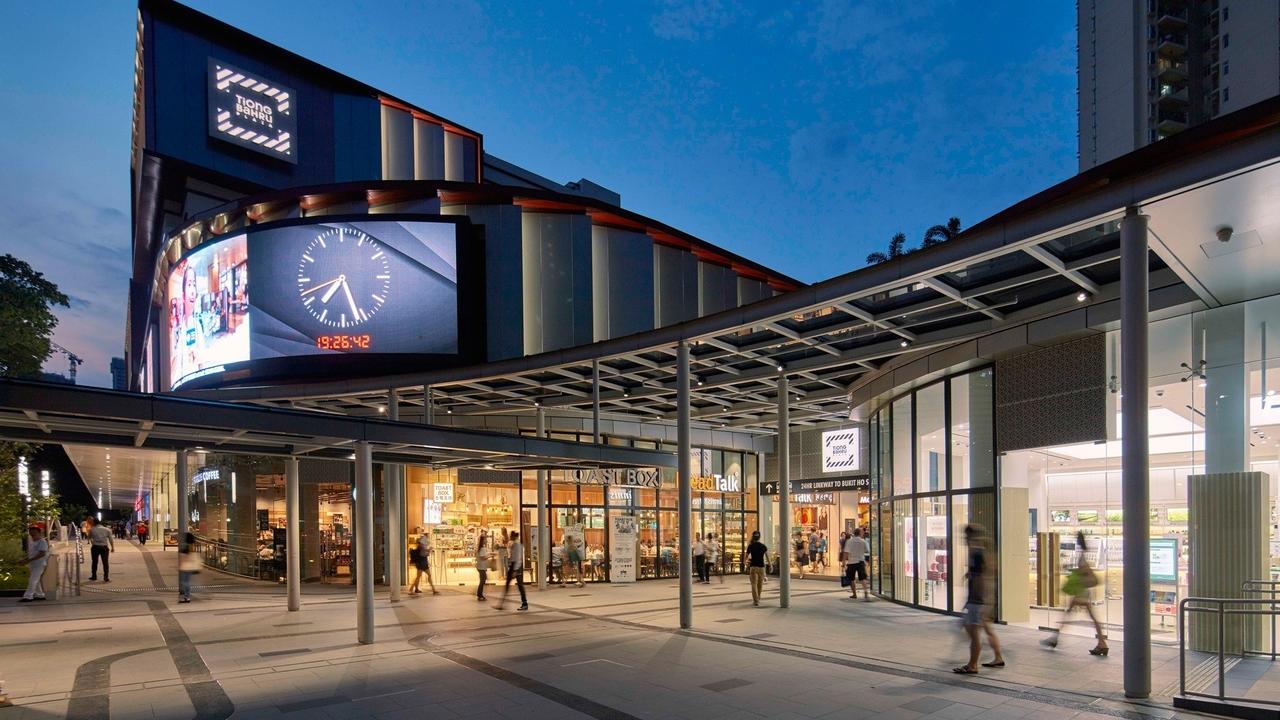For investors who are looking to build their passive income, it is quite common to see their portfolio include Real Estate Investment Trusts (“REITs”). The purpose of REIT is to invest in income-producing real estate across a range of property sectors, and these rental incomes are then distributed to investors. These tend to be predictable, given how lease agreements are structured over a few years.
Retail REITs are one of the types of REIT available. Their primary investments are in shopping malls and free-standing retail. In Singapore, this is no different as you see most of the shopping malls are owned by REITs. Some common bigger names you will see, and their respective REITs are as below:
- CapitaLand – CapitaLand Integrated Commercial Trust (SGX: C38U)
- Frasers – Frasers Centrepoint Trust (SGX: J69U)
- Mapletree – Mapletree Pan Asia Commercial Trust (SGX: N2IU)
Keep in mind of the 3 above, only Frasers Centrepoint Trust has a portfolio that consists mainly of Singapore retail space. CapitaLand Integrated Commercial Trust has commercial properties in their portfolio and Mapletree Pan Asia Commercial Trust has overseas properties.
So what is the story that Singapore Retail Properties are good investments?
It revolves around the plans the Singapore government have made in relation to heartland living. To start off, do have a read of the 2 extracts below from the respective government websites, extracted as of 10 March 2024:
Extract 1
As a master planner and developer, HDB takes a comprehensive approach in developing entire towns, not just housing alone. Over the years, town planning has evolved in tandem with changing socio-economic and demographic conditions, guided by a few principles:
Planning for Self-Sufficiency
HDB towns are developed as total living environments to meet people’s daily needs. Each town is reasonably self-sufficient. In addition to housing, residents are well served by shops, schools and social and recreational facilities.
The Checkerboard Concept
At the heart of each town is the town centre: the key commercial and activity hub. Around it are smaller neighbourhoods of 4,000 to 6,000 units, each with its own shops, schools and parks. Each neighbourhood further comprises precincts of about 400 to 800 units, served by a local shop cluster, precinct facilities (such as a playground) and a precinct green. Smaller and more intimate, walkable residential clusters of 1,200 to 2,800 dwelling units can be found in the newer towns, such as Punggol.
Hierarchy of Facilities
Low-rise, low-intensity land uses such as parks and schools are juxtaposed with high-rise, high-density residential developments to achieve visual and spatial relief in our high-rise, high-density public housing environment.
The Neighbourhood Concept
Larger facilities and amenities serve a wider catchment of residents, while smaller-scale amenities cater to localised day-to-day needs. The facilities at different levels include:
- At Town level—a town plaza, town park, sports complex, integrated transport hub and shopping centres.
- At Neighbourhood level — neighbourhood centres, schools and parks.
- At Precinct level—a precinct pavilion, 3-generational play and fitness facilities and community gardens.
Planning for Connectivity
HDB towns are well served by a mass transit network, highways and roads. This is now supplemented by more comprehensive cycling and pedestrian networks.
Website: The Future of Heartland Living
Extract 2
The government has in place measures to help support heartland businesses. This include the Revitalisation of Shops (ROS) scheme which is a measure to help commercial retailers.
Under this scheme, support includes:
- Co-funding for upgrading of common area
- Co-funding for optional shopfront improvement works
- Co-funding for promotional events
- Rent-free periods for tenants to renovate their shops
- Start-up fund for formation of Merchants’ Association
Website: HDB – Business – Commercial – ProBusiness Measures And Services
Reading the above, you can see that the government intend for every town to have a shopping mall available and successful. Such that they are willing to have measures to help support heartland businesses financially. This will encourage businesses to set up in the different shopping malls around Singapore instead of only looking at the city center.
There are probably good reasons for this, such as reducing congestion. Imagine a scenario where only a few towns have supermarkets. Everyone living in Singapore will be flocking to these towns on a weekly basis just to stock up on their groceries, causing them to be over-crowded. Having only a few towns with supermarkets will also likely drive the prices of the residential buildings in those areas significantly higher than others. This may result in a concentration of wealth in certain areas. Having shopping malls in each town will be able to prevent this, directing the traffic around Singapore and ensure they are well spread out across the country.
If the economy were to run into some issues and the tenants find it difficult to sustain their business, it is very likely that the government will look to implement initiatives to assist these businesses. Indirect ways could be like the existing CDC vouchers, where not just it helps with the cost of living of those in Singapore, it helps to channel funds to be used at these shops and boost their businesses. A CDC voucher is much better than a cash handout in ensuring the funds return to the local economy.
This means that as an investor of retail properties, you can be assured that there will almost always be tenants for your shopping malls, which translates to rental income. It may still be subjected to capital depreciation and appreciation when exposed to economic conditions, such as the current high interest rates. However as of now, your interests are in line with the government.
Disclaimer: Not financial advice. All data and information provided on this site is for informational purposes only.




One thought on “The Bull Case For Investing In Singapore Retail Property”
Comments are closed.